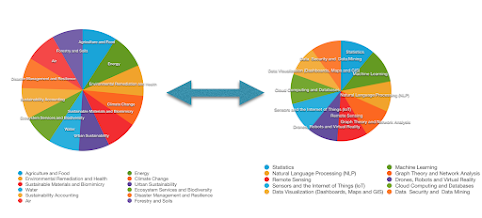Data and Smart Cities
If you had to pick a buzzword for 2019 in clean technology and data science, it would be “Smart Cities”! This year, we’ve heard about Alphabet’s Sidewalk Labs and their efforts to design one in Toronto; India and China have announced plans to redesign over 100 cities into “Smart Cities”; European countries like Norway and Finland highlight the fact that much of what is touted as a “Smart City” already exists in their systems; and plenty of people in Silicon Valley have their own ideas of what Smart Cities should be like and what they should do. A couple of features do stand out in many of the conferences and presentations about Smart Cities - 1) Opportunities abound with an estimated market size of $237 billion by 2025 according to one study and 2) There’s a wide range of interpretations about what exactly makes a city “Smart”. The most conservative definition and the one that governments and city organizations highlight is “ where traditional networks and services are


